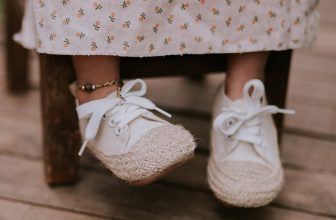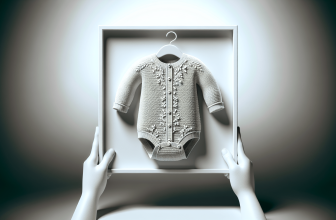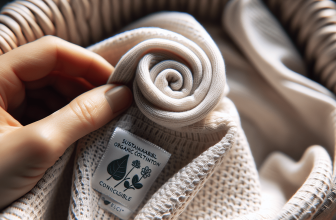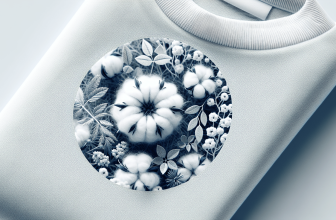When it comes to choosing clothes for your little one, ensuring comfort and safety is of utmost importance. From the moment they are born, babies have delicate skin that requires gentle care. To help you navigate the overwhelming options, this article will guide you on how to choose comfortable and safe fabrics for baby clothes. By understanding the characteristics of different materials and considering factors like breathability and hypoallergenic properties, you can make informed decisions that prioritize your baby’s well-being and comfort.
Consider the Baby’s Skin Sensitivity
When choosing fabrics for your baby’s clothes, it’s crucial to understand the needs of their delicate skin. Babies have extremely sensitive skin that is more prone to irritation and allergies. By opting for fabrics that are gentle and kind to their skin, you can ensure their comfort and well-being.
Avoid Irritating Fabrics and Chemicals
Certain fabrics and chemicals can cause discomfort and irritation to your baby’s skin. Fabrics such as wool and synthetic materials like polyester can be harsh and abrasive, leading to itchiness and redness. Additionally, chemicals like dyes and fragrances present in some fabrics can also trigger allergic reactions. It’s best to avoid these fabrics and opt for more natural and hypoallergenic options instead.
Opt for Organic and Natural Fabrics
Choosing organic and natural fabrics is an excellent way to ensure your baby’s comfort and minimize the risk of skin irritation. Fabrics like organic cotton, bamboo, and hemp are great choices as they are soft, breathable, and gentle on the skin. These fabrics are also free from harmful pesticides and chemicals, making them safer for your little one.
Check for Safety Certifications
To ensure the safety of your baby’s clothes, it’s essential to look for certified labels. These labels indicate that the garments have undergone rigorous testing and meet specific safety standards. Certifications from reputable organizations like Oeko-Tex Standard 100 and Global Organic Textile Standard (GOTS) are good indicators of quality and safety.
Consider Global Standards
When selecting baby clothes, it’s advisable to consider global standards that regulate the manufacturing process and the use of certain chemicals. Standards such as REACH (Registration, Evaluation, Authorization, and Restriction of Chemicals) in the European Union and CPSIA (Consumer Product Safety Improvement Act) in the United States set requirements for the safety of products, including clothing.
Ensure Compliance with Fire Safety Standards
Fire safety is an important aspect to consider when choosing baby clothes. Look for garments that comply with fire safety standards, such as being made from flame-resistant materials. These standards vary from country to country, so it’s important to be aware of the regulations in your specific region.
Evaluate Fabric Softness and Breathability
The comfort of your baby’s clothes is crucial for their overall well-being. Prioritize soft and gentle fabrics that won’t irritate their delicate skin. Fabrics like organic cotton, bamboo, and modal are known for their softness. Additionally, choose materials that are breathable to prevent overheating and keep your baby cool and comfortable.
Choose Breathable Materials to Prevent Overheating
Babies have a harder time regulating their body temperature compared to adults, making overheating a potential concern. Opt for fabrics that allow airflow and promote breathability, such as cotton and bamboo. These fabrics help in maintaining an optimal body temperature and reducing the risk of overheating, especially during warm weather.

This image is property of images.pexels.com.
Consider Fabric Weight and Texture
The weight and texture of the fabric can impact your baby’s comfort. Lighter weight fabrics like cotton jersey or muslin are ideal for warmer climates, allowing air circulation and preventing your baby from feeling too hot. In colder weather, heavier weight fabrics like fleece or knitwear can provide warmth and insulation. Additionally, consider the texture of the fabric and choose materials that are soft and gentle against your baby’s skin.
Look for Easy Care and Durability
Baby clothes go through a lot of wear and tear, so it’s important to choose fabrics that are easy to care for and durable. Opt for machine washable fabrics that can withstand frequent washing without losing their shape or color. Additionally, consider the fabric’s resistance to wear and tear to ensure that it will last through multiple uses and washes.
Check for Machine Washable Fabrics
Babies are notorious for making messes, so having machine washable clothes is a lifesaver for busy parents. Look for fabrics that can be easily thrown into the washing machine and won’t require special care or dry cleaning. This convenience will save you time and effort while ensuring that your baby’s clothes stay clean and fresh.
Consider the Fabric’s Resistance to Wear and Tear
Baby clothes often go through rough handling and frequent washing, so it’s important to choose fabrics that can withstand such treatment. Fabrics like cotton and polyester blends are known for their durability, while delicate fabrics like silk or satin may not hold up as well. Pay attention to the fabric’s composition and construction to ensure it can withstand the demands of daily use.
Avoid Fabrics Prone to Shrinking or Stretching
Certain fabrics have a tendency to shrink or stretch after washing, which can affect the fit and comfort of your baby’s clothes. Fabrics like pure cotton or wool are more prone to shrinkage, while synthetic materials like polyester are less likely to stretch out of shape. Consider these factors when selecting fabrics to ensure your baby’s clothes maintain their fit and shape over time.
Avoid Potential Allergens and Chemicals
To prevent potential allergic reactions, it’s important to choose fabrics that are free from allergens and harmful chemicals. Synthetic fibers like polyester or nylon can be more likely to cause skin irritation compared to natural fibers like cotton or bamboo. Additionally, fabrics treated with formaldehyde or flame retardants can also be problematic. Opt for natural and organic fabrics to minimize the risk of allergies and sensitivities.
Steer Clear of Synthetic Fibers and Dyes
Synthetic fibers such as polyester and acrylic are known to be less breathable and can cause skin irritations. Similarly, dyes used in fabric coloring can contain harsh chemicals that may cause allergic reactions. It’s best to avoid fabrics made from synthetic fibers and opt for natural fibers like cotton or bamboo, which are softer and more gentle on the skin.
Avoid Fabrics Treated with Formaldehyde or Flame Retardants
Formaldehyde is commonly used in fabric finishing to prevent wrinkling, shrinkage, and color fading. However, it can be a skin irritant and potentially harmful to your baby. Similarly, flame retardants used in fabrics can contain chemicals that are considered hazardous to health. Look for fabrics that are free from these treatments to ensure your baby’s well-being.
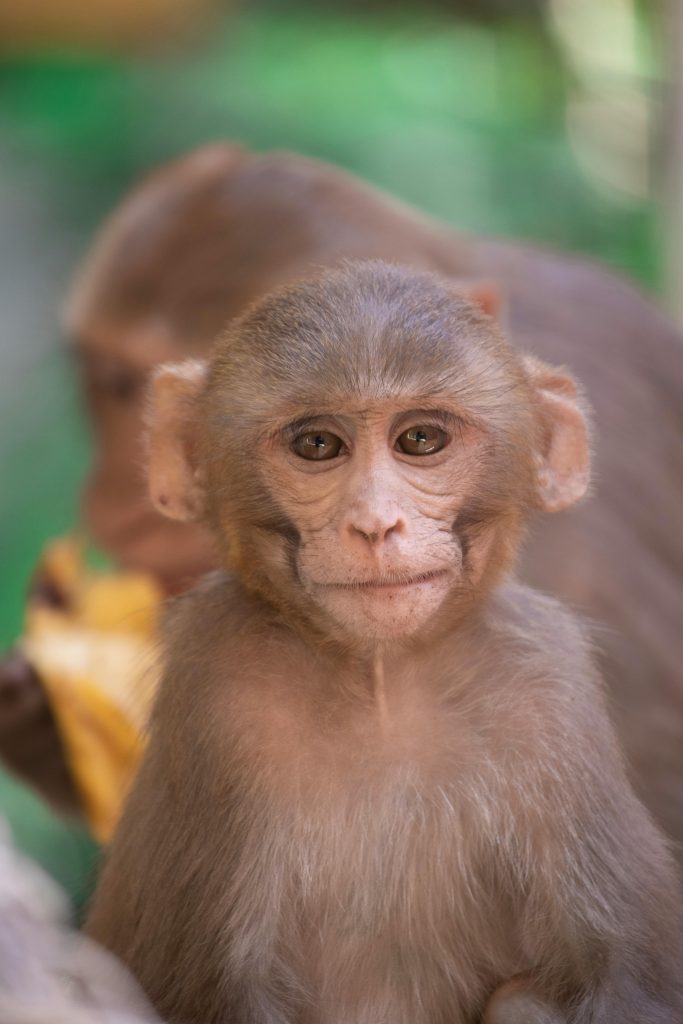
This image is property of images.pexels.com.
Be Mindful of Potential Allergenic Materials
Certain materials used in fabrics may have the potential to cause allergic reactions in sensitive individuals. Common allergenic materials include latex, wool, and certain natural fibers. If your baby has known allergies or sensitivities, it’s important to be mindful of these materials and choose fabrics that are hypoallergenic and free from potential allergens.
Consider the Climate and Season
The climate and season play a crucial role in determining the best fabrics for your baby’s clothes. Consider the weather conditions in your area and choose fabrics accordingly to ensure your baby’s comfort.
Choose Fabrics Suitable for Different Weather Conditions
In warmer weather, lightweight and breathable fabrics like cotton or bamboo are ideal as they allow heat to escape and keep your baby cool. For colder weather, opt for thermal fabrics like fleece or wool that provide insulation and warmth.
Think about Layering Options
Layering is a great way to adapt your baby’s clothing to changing temperatures throughout the day. Look for fabrics that can be easily layered, such as cotton or merino wool, which provide warmth without overheating. This allows you to add or remove layers as needed to keep your baby comfortable.
Consider the Temperature Regulation Properties of Fabrics
Certain fabrics have natural temperature regulation properties that can benefit your baby’s comfort. Fabrics like merino wool are known for their ability to regulate body temperature, keeping your baby warm in cool weather and cool in warm weather. Consider these fabrics when dressing your baby for different climates and seasons.
Pay Attention to Seams and Labels
The construction details of your baby’s clothes can make a big difference in their comfort. Pay attention to the seams and labels to ensure they don’t cause any discomfort or irritation to your baby’s delicate skin.
Opt for Flat Seams to Prevent Chafing
Flat seams are a great feature to look for, as they minimize friction against your baby’s skin and reduce the risk of chafing or irritation. These seams lie flat against the fabric, providing a smooth and comfortable finish.
Choose Clothing with Tagless Labels
Tags can be a source of discomfort and irritation for babies, particularly if they rub against their delicate skin. Look for clothing with tagless labels or labels that are printed directly onto the fabric. These labels eliminate the risk of irritation and make dressing your baby a breeze.

This image is property of images.pexels.com.
Ensure Labels and Accessories Are Securely Attached
Labels and accessories like buttons or bows should be securely attached to the garments to prevent any choking hazards. Before dressing your baby, give the clothing a thorough check to ensure all labels and accessories are firmly attached.
Evaluate Clothing Construction
Inspect the overall construction of the baby clothes to ensure they are well-made and durable. Certain features can indicate the quality and reliability of the garments.
Look for Reinforced Snap or Button Closures
Snaps or buttons are commonly used in baby clothes, so it’s important to ensure they are securely attached and reinforced. This prevents them from coming loose and becoming a choking hazard. Opt for garments with reinforced closures for added durability.
Check for Double Stitching for Added Durability
Double stitching is a sign of quality construction and can significantly enhance the durability of your baby’s clothes. Inspect the seams to ensure they are double stitched, which helps prevent unraveling and prolongs the lifespan of the garment.
Examine Details for Potential Choking Hazards
Certain design elements like decorative buttons, bows, or appliques can pose a choking hazard for babies. Ensure these details are securely attached and cannot be easily detached. It’s also important to remove any small parts before dressing your baby to prevent any accidents.
Consider the Design and Style
While comfort and safety are paramount when selecting baby clothes, the design and style also play a role in your decision-making process. Choose clothes that are both comfortable and visually appealing for your little one.
Prioritize Comfortable and Functional Designs
Opt for clothing designs that prioritize comfort and functionality. Look for features like expandable necklines, stretchy fabrics, and easy fastenings that make dressing and changing diapers easier. Avoid garments with complicated closures or designs that may cause discomfort or restrict movement.
Avoid Clothing with Unnecessary Embellishments
Clothing with excessive embellishments like buttons, sequins, or appliques can cause discomfort or even pose a choking hazard. It’s best to choose simpler designs that prioritize your baby’s comfort and safety.
Consider Clothing with Easy Access for Diaper Changes
Diaper changes are a frequent part of your baby’s routine, so it’s important to choose clothing that allows for easy access. Look for garments with snaps or zippers at the diaper area, as these make changing diapers quick and hassle-free.
Read Reviews and Seek Recommendations
When in doubt, it’s always helpful to hear from other parents who have experience with specific baby clothing brands and fabrics. Take the time to read online reviews and seek recommendations from other parents or caregivers.
Research Online Reviews and Recommendations from other Parents
There are plenty of online forums, parenting websites, and social media groups where parents share their experiences and opinions on baby clothing. Take advantage of these resources and read reviews from other parents to get insights into the quality, comfort, and safety of different brands and fabrics.
Ask for Advice from Pediatricians or Baby Clothing Experts
Pediatricians or baby clothing experts can provide valuable advice and guidance when it comes to choosing the right fabrics for your baby. Don’t hesitate to ask for recommendations or seek professional opinions to ensure you make the best choices for your child.
Consider the Reputation and History of the Brand
The reputation and history of the brand can also be a good indication of the quality and safety of their baby clothes. Look for established brands with a track record of producing high-quality garments that are both comfortable and safe for babies. Reading about the brand’s values, manufacturing processes, and commitment to safety can help you make an informed decision.
Choosing comfortable and safe fabrics for your baby’s clothes is essential to their well-being. By considering factors such as skin sensitivity, safety certifications, fabric softness, easy care, potential allergens, climate, construction, and design, you can ensure your baby is dressed in clothes that prioritize their comfort, health, and safety. Remember to read reviews, seek recommendations, and trust your instincts when making these important decisions. With the right fabrics and clothing choices, you can provide your baby with the best possible start in life.



